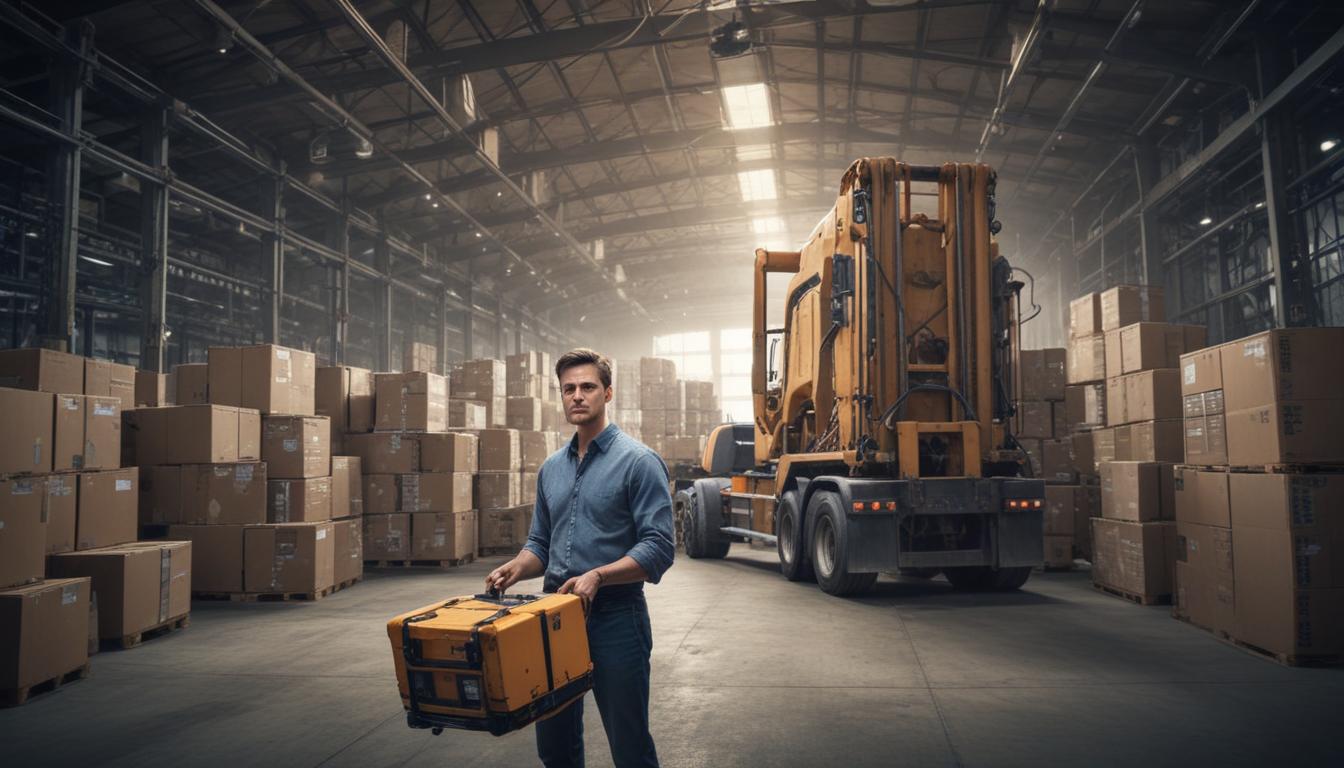Now Reading: Boost Your Supply Chain With Tech
- 01
Boost Your Supply Chain With Tech
Boost Your Supply Chain With Tech

Unlocking Efficiency How Technology is Revolutionizing Supply Chain Optimization
Are you constantly battling rising operational costs, unexpected delays, and a frustrating lack of visibility into your own supply chain? In today’s fast-paced market, customers expect speed and reliability, but global disruptions and logistical complexities make it harder than ever to deliver. Relying on outdated spreadsheets, manual tracking, and siloed communication channels is no longer a viable strategy. These methods lead to costly errors, wasted resources, and an inability to react quickly to problems, leaving you a step behind your competitors. The good news is that there is a powerful solution. The key to transforming these challenges into a competitive advantage lies in strategically integrating modern technology.
By embracing the right digital tools, you can move from a reactive state of firefighting to a proactive state of control and predictability. Technology offers the ability to see every moving part of your supply chain in real time, predict potential disruptions before they happen, and automate repetitive tasks to boost speed and accuracy. This shift not only solves your immediate pain points but also builds a more resilient, agile, and cost-effective operation for the future. It’s time to stop guessing and start leveraging data-driven insights to build a supply chain that works for you, not against you.
Gaining Unprecedented Visibility The Foundation of Optimization
The first and most critical step in optimizing any system is understanding it completely. For decades, supply chains operated in a fog, with different departments and partners holding separate pieces of the puzzle. A shipment’s status could be a mystery between a phone call to the driver and an email from the warehouse. This lack of a single source of truth is a primary cause of inefficiency. When you cannot see where your assets are, what condition they are in, or how processes are performing in real time, you are forced to build in expensive buffers like excess inventory and longer lead times to compensate for the uncertainty.
This is where the Internet of Things (IoT) and cloud-based platforms have become game-changers. IoT devices, such as GPS trackers on trucks, RFID tags on pallets, and smart sensors in containers, provide a constant stream of live data. You can monitor not just the location of a shipment, but also crucial environmental conditions like temperature and humidity, which is vital for perishable goods or pharmaceuticals. This data is then aggregated on a centralized cloud platform, creating a digital twin of your supply chain that is accessible to all stakeholders. This newfound transparency eliminates guesswork, enables immediate responses to deviations, and provides the rich data needed for deeper analysis and optimization.
From Reactive to Predictive The Power of AI and Machine Learning
Once you have established real-time visibility, the next evolution is to use that data to look into the future. Traditionally, businesses have operated in a reactive mode; a problem occurs, and then the team scrambles to fix it. An unexpected port closure, a vehicle breakdown, or a sudden spike in demand can throw the entire system into chaos. This reactive approach is not only stressful and inefficient but also incredibly costly, leading to expedited shipping fees, lost sales, and damaged customer relationships. True optimization is about preventing problems, not just solving them.
Artificial Intelligence (AI) and Machine Learning (ML) are the engines that power this shift from reactive to predictive. By analyzing vast datasets—including your historical shipping data, weather patterns, port traffic, social media trends, and economic indicators—AI algorithms can identify patterns that are invisible to the human eye. This enables remarkably accurate demand forecasting, allowing you to align inventory levels perfectly with anticipated customer needs. Furthermore, AI can power predictive maintenance for your fleet and warehouse equipment, flagging a vehicle for service before it breaks down on the road. This predictive capability transforms your supply chain into a forward-looking, intelligent system that anticipates challenges and seizes opportunities.

Building a Resilient and Transparent Future Key Technologies to Watch
Embracing Automation and Robotics
The warehouse and fulfillment center are the heart of any supply chain, but they are often a source of bottlenecks due to their reliance on manual labor for repetitive tasks. Human error in picking and packing can lead to incorrect orders, while the physical strain can limit speed and productivity. Automation and robotics directly address these challenges by introducing a new level of precision and endurance. Automated Guided Vehicles (AGVs) can transport goods around a warehouse 24/7 without breaks, while sophisticated robotic arms can pick, sort, and pack items with speed and accuracy far exceeding human capabilities.
This infusion of automation does not necessarily replace the human workforce but rather elevates it. Employees can be retrained for more strategic roles, such as managing the robotic systems, handling exceptions, and focusing on quality control. The result is a dramatic increase in throughput, allowing your business to process more orders in less time. Faster fulfillment translates directly to higher customer satisfaction and a significant competitive edge, especially in the demanding world of e-commerce.
The Trust Layer Blockchain Technology
In a global supply chain involving countless suppliers, carriers, and regulators, trust and traceability are paramount. How can a consumer be certain that their “organic” produce is genuinely organic? How can a company prove its products were ethically sourced? Historically, this has relied on paper trails and databases that can be altered or falsified. Blockchain technology provides a revolutionary solution by creating a shared, decentralized, and immutable ledger.
Think of blockchain as a secure digital record book that every participant in the supply chain can see but no single entity can change. When a product moves from the farm to the factory, and then to the distributor and retailer, each step is recorded as a permanent “block” of data on the chain. This creates an unchangeable, end-to-end history of the product’s journey. For businesses, this ensures compliance and prevents counterfeit goods from entering the market. For consumers, it offers unparalleled transparency, allowing them to scan a QR code on a product and see its entire lifecycle, building a powerful layer of brand trust that is essential in today’s conscious market.


































